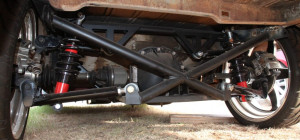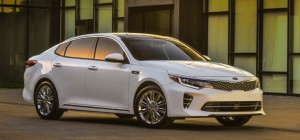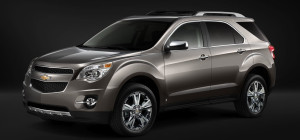 In sci-fi movies, driverless cars are all too common. But in real life, we hardly get to see those cars. That's because the line between real life and science fiction hasn't yet become thin. However, there seems to be hope down the line. Driverless cars have been becoming a phenomenon for quite some time. In this article, I'm going to discuss them in vivid details.
In sci-fi movies, driverless cars are all too common. But in real life, we hardly get to see those cars. That's because the line between real life and science fiction hasn't yet become thin. However, there seems to be hope down the line. Driverless cars have been becoming a phenomenon for quite some time. In this article, I'm going to discuss them in vivid details.
You might feel delighted to know Google has taken on this initiative. The internet giant seems too keen on making a presence in this vertical. Here're some details on Google's effort to make autonomous vehicles mainstream.
A much needed restructure
Last month, Google announced that it is restructuring its corporate setup. The restructuring will transfer Google's shares to a company called Alphabet. It holds outstanding stocks of Google. According to experts, the new structure will suit Google best for the initiatives that it is going to take in segments like driverless car and self-driving mobility in general.
The restructure indicates Google is indeed serious about making its presence felt in domains that are outside its main business fiefdom. Experts are of the opinion that Google sees future in Alphabet. The announcement on Google's official blog gave all the hints that the search engine giant is betting on Alphabet and hoping for a day, when its revenue, earned from driverless mobility and robotics will surpass that, earned from the internet segment.
Some misconceptions
There are plenty of misconceptions when it comes to driverless cars. The technology hasn't yet fully evolved and for that reason, misconceptions and even rumors are aplenty. The misconceptions are classified into four categories:
#Misconception 1: The misconception is quite prevalent that initial models will be distributed among the regular consumers. That's not true; first of all, when a consumer purchases a car, he expects it to render the same performance wherever he drives it. But driverless cars, according to experts, won't render the same performance across all terrains.
There are some autonomous cars that run on predefined routes. You can make out from this description alone that those cars are mostly taxis and buses as no passenger vehicle owner will drive his car on the same route over and again. Rental car companies can make use of driverless cars. The investment on their part is just one time. The benefits are however, recursive, such as the rental company won't have to hire a driver.
#Misconception 2: It's a sheer misconception that a self-driving car will run on existing algorithms. The concept of driverless cars is essentially related to artificial intelligence; common sense is enough to understand why; to perform some key functions such as distance calculation, route changes, fuel consumption, etc., the algorithms behind the car need to be highly advanced.
Such state-of-the-art algorithms are currently underway. Once they fully develop, we'll see driverless cars on the street. But machine learning, which is essentially needed for a driverless car to function is still in a nascent stage and today's not-so-superior algorithms cannot replace it.
#Misconception 3: Another misconception is the driver assistance system will one day evolve into fully autonomous cars. This is a sheer misconception because the existing driver assistance systems operate only on a short-term basis and there's no enough scope for it to develop.
Besides, the driver assistance system comes with limited settings. For examples, warning for lane change comes shortly after the car moves from the existing lane. Emergency braking also activates at the very last moment.
But when driverless cars will be all too common in the market, they will completely do away with margin of errors.
Mobility buying
It's a new concept that appears consumer-friendly. The slogan that summarises the concept is "buy mobility, not metal." Mobility buying hits the nail at the right spot and thereby articulates why the auto industry will have to rely on driverless cars in future.
In the executive summary of the book "Driverless Car Revolution: Buy Mobility, Not Metal," Rutt Bridges beautifully explained how mobility cars will free us from a lot of hassles such as cash, crowd, tipping, congestion and many more.
In order for the concept to materialize, the use of driverless cars needs to be widespread. The owner can save many unrelated costs such as insurance, gas price, registration, etc. In fact, the owner can reclaim 5% of his waking hours and can save up to $5000 a year.
Numbers don't lie
An Australian telecom company called Telstra issued a report that explains how the use of driverless cars can save money for the nation. Just go through the report and the numbers that are there. They won't lie.
The report shows the growth of road network needs to be on par with that of driverless cars. By tallying one to the other, the Australian government can reduce spending on road development.
At the end
Well it's not the end, it's just the beginning. Driverless cars have a long way to go before we all start to ride on them. But with the updates discussed in this article, that seems to be realistic.
Contributed by http://www.plates4less.co.uk/







